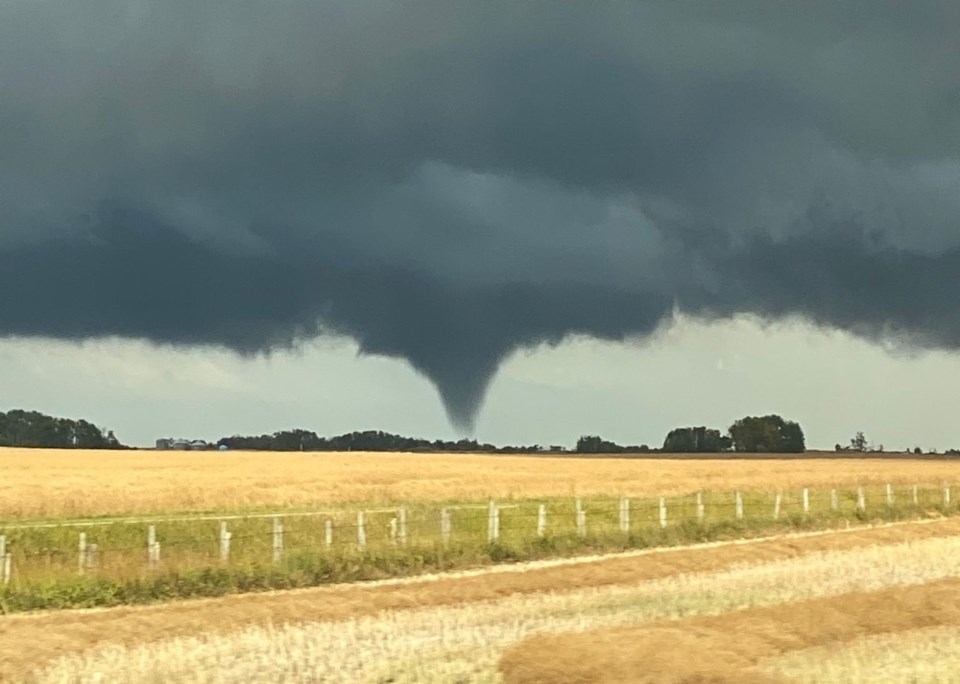SASKATOON — Saskatchewan has been in ongoing whirl-power in 2025 with five tornadoes already confirmed June 14 weekend and June 19 an astounding eight tornadoes are being investigated in Saskatchewan.
Unstable weather systems forecasted for June 20-22 also have the potential to create more tornado warnings.
As the summer season ramps up, storm trackers and emergency officials continue to monitor weather patterns.
The Canadian Red Cross website offers valuable tips for protecting yourself from tornado threats.
“In Canada, Tornado season is from April to September but can occur at any time of the year. Winds within a tornado can reach speeds of up to 500 km/h. Regardless of size, tornadoes have the ability to uproot trees, flip cars and damage homes.”
The best way to protect yourself and your family in case of a tornado is to follow these steps:
Pay attention to weather watches and warnings.
Move your family to a safe location on the lowest level of a building. Stay away from windows, outside walls and doors. Practice drills help everyone know what to do and be prepared.
Visit Environment Canada for up-to-date information on tornado conditions, storm maps and weather warnings.
Know the difference between a tornado warning and a tornado watch:
A tornado warning means a tornado is already occurring or will occur soon in your area. Evacuate if advised to do so.
A tornado watch means a tornado is possible in your area. Stay alert for more information.
If you are in a high-rise, pick a place in a hallway in the centre of the building. Talk to your building superintendent or manager and know your building's emergency plan.
Make a personalized preparedness kit. Families should be prepared to be self-sustaining for at least three days. Kits should include practical items such as drinking water, food, cash and a portable radio. However, they should also include items that are unique to your own family’s needs. This could include baby items, medical prescriptions and pet food.
During a severe weather incident like tornado warnings:
Continue to listen to local news and weather reports for updates.
Watch for danger signs:
Dark, often greenish or orange-grey skies.
Large hail.
Large, dark, low-lying, rotating or funnel-shaped clouds.
Roaring noise – similar to the sound of a freight train.
Wait for the all clear before leaving your safe location.
If you are outside and there is no shelter nearby, Lie flat in a ditch or a low-lying area
Get out immediately and head for safety if you are in a car or mobile home. It is unsafe to stay in your vehicle as it could be picked up, blown over or roll over you.
After a serious weather system passes:
Listen to the radio for further information and instructions. Only return home when it is safe to do so. Check on vulnerable family members, friends and neighbours who may require assistance. Stay away from damaged areas and fallen power lines.




